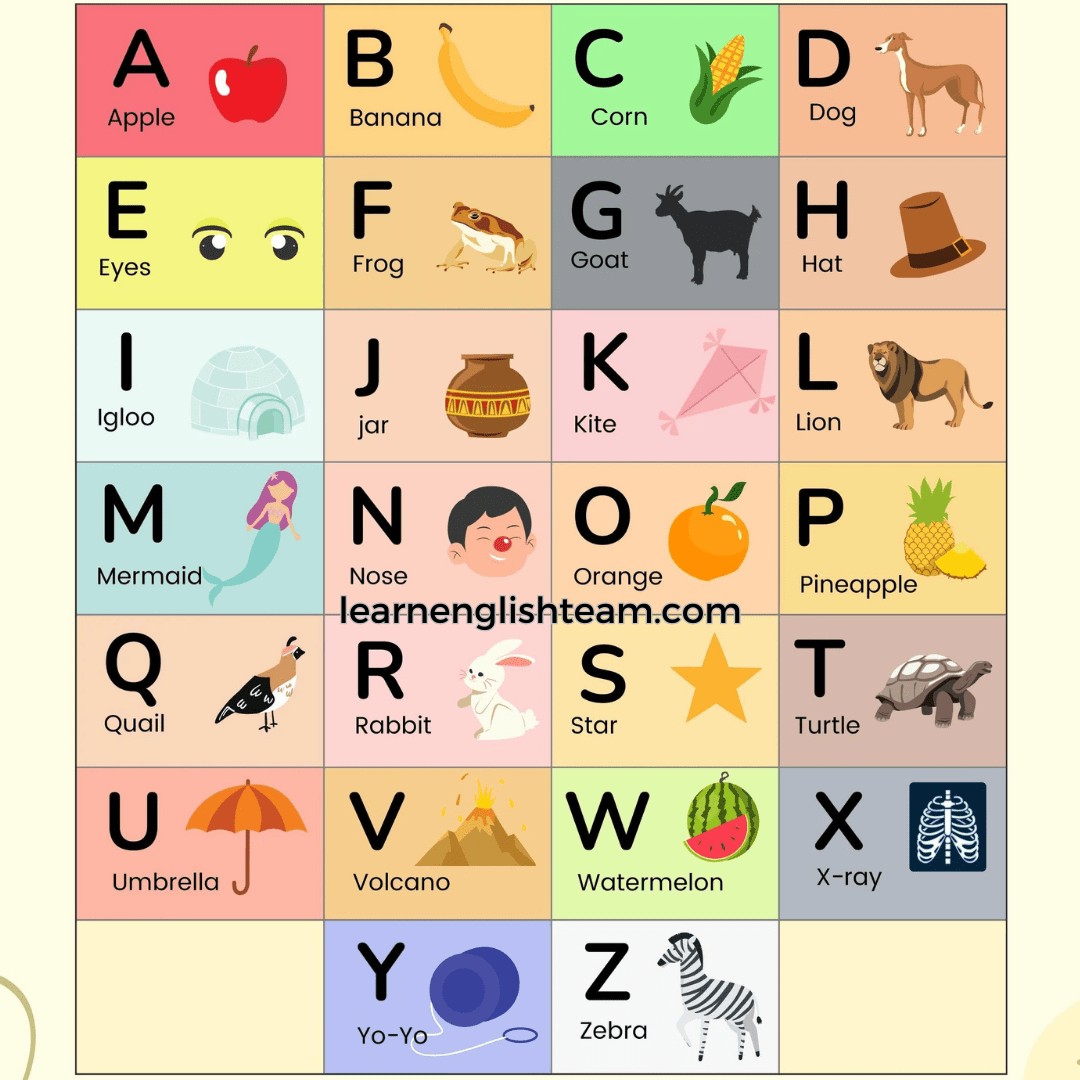Low battery
Battery level is below 20%. Connect charger soon.
The Alphabet in English – Easy A to Z Learning Guide
Learning the English alphabet is the cornerstone of literacy. Whether you’re a child just starting your educational journey or an adult learning English as a second language, mastering the alphabet is the crucial first step. This comprehensive guide will walk you through each letter, its pronunciation, and some helpful tips to make learning fun and effective. We’ll cover everything from the basics to more nuanced aspects, ensuring you build a solid foundation for reading and writing.
The English Alphabet: An Overview
The English alphabet consists of 26 letters, divided into two main categories: vowels and consonants. Understanding this fundamental division is key to proper pronunciation and spelling.
- Vowels: A, E, I, O, U (and sometimes Y)
- Consonants: B, C, D, F, G, H, J, K, L, M, N, P, Q, R, S, T, V, W, X, Y, Z
Let’s delve into each letter individually.
The Letters A to Z: Pronunciation and Examples
This section breaks down each letter, providing its standard pronunciation and a few example words to help you understand its usage. Remember, English pronunciation can be tricky with variations, but this guide provides the generally accepted sounds.
- A (ay): Apple, Ant, Airplane
- B (bee): Ball, Book, Bird
- C (see): Cat, Car, Cake (Note: “C” can also sound like “S” before “E,” “I,” or “Y” - e.g., City, Circle, Cycle)
- D (dee): Dog, Door, Dance
- E (ee): Elephant, Egg, Eye
- F (ef): Fish, Flower, Frog
- G (jee): Girl, Green, Game (Note: “G” can have a soft “J” sound before “E,” “I,” or “Y” - e.g., Giant, Gym)
- H (aitch): House, Hat, Happy
- I (eye): Ice, Ink, Island
- J (jay): Jump, Jacket, Jam
- K (kay): Kite, Key, King
- L (el): Lion, Leaf, Lamp
- M (em): Monkey, Moon, Man
- N (en): Nose, Nest, Number
- O (oh): Orange, Owl, Open
- P (pee): Pig, Pen, Park
- Q (kyoo): Queen, Quiet, Quick (Always followed by “U” in standard English words)
- R (ahr): Rabbit, Red, Run
- S (ess): Sun, Star, Snake
- T (tee): Tree, Table, Train
- U (you): Umbrella, Under, Up
- V (vee): Van, Voice, Vase
- W (double-you): Water, Whale, Window
- X (eks): X-ray, Box, Fix
- Y (wy): Yellow, Yes, Yarn (Can act as a vowel at the end of words like “Happy,” “City.”)
- Z (zee): Zebra, Zoo, Zero
Tips for Learning the Alphabet Effectively
Here are some practical tips to accelerate your alphabet learning journey:
- Repetition is Key: Practice saying the letters and their sounds aloud repeatedly.
- Use Flashcards: Create flashcards with each letter on one side and an example word or picture on the other.
- Sing the Alphabet Song: The alphabet song is a classic and effective way to memorize the letter sequence.
- Read and Write Regularly: Expose yourself to written English through books, articles, and simple exercises. Practice writing the letters by hand.
- Utilize Online Resources: Explore interactive websites and apps designed for alphabet learning, offering games and quizzes.
- Focus on the Vowels: Pay special attention to the vowels, as they are fundamental to forming words.
Common Challenges and Solutions
One of the most common challenges is differentiating between similar-sounding letters like B and D, or P and B. Here’s how to overcome these:
- Visual Aids: Use visual aids such as drawings or diagrams to emphasize the shape of each letter.
- Practice Pronunciation: Focus on the subtle differences in pronunciation, paying attention to the mouth movements.
- Consistent Practice: Regular practice and exposure to the alphabet will help solidify your understanding.
Conclusion
Mastering the English alphabet is a fundamental skill that opens the door to literacy. By understanding the letters, their sounds, and practicing consistently, you can build a strong foundation for reading, writing, and speaking English. Embrace the learning process, utilize the provided tips, and enjoy the journey of expanding your language skills.
Frequently Asked Questions (FAQs)
1. What are the vowels in the English alphabet?
The vowels in the English alphabet are A, E, I, O, and U. The letter Y can also function as a vowel in certain words.
2. How can I improve my pronunciation of the alphabet?
Practice saying each letter slowly and clearly. Listen to native English speakers and mimic their pronunciation. Use online resources that offer audio examples of each letter.
3. Is learning the alphabet necessary for learning English?
Yes, learning the alphabet is the essential first step. It forms the base for recognizing words, spelling, and pronunciation, allowing you to build your English vocabulary and sentence structure.
4. How long does it take to learn the alphabet?
The time it takes to learn the alphabet varies depending on the individual and their learning style. However, with consistent practice, most learners can master the alphabet within a few days or weeks.
5. How can I make learning the alphabet fun for a child?
Use alphabet games, sing the alphabet song, and incorporate visual aids like colorful flashcards and alphabet blocks. Make it a playful and engaging experience!




